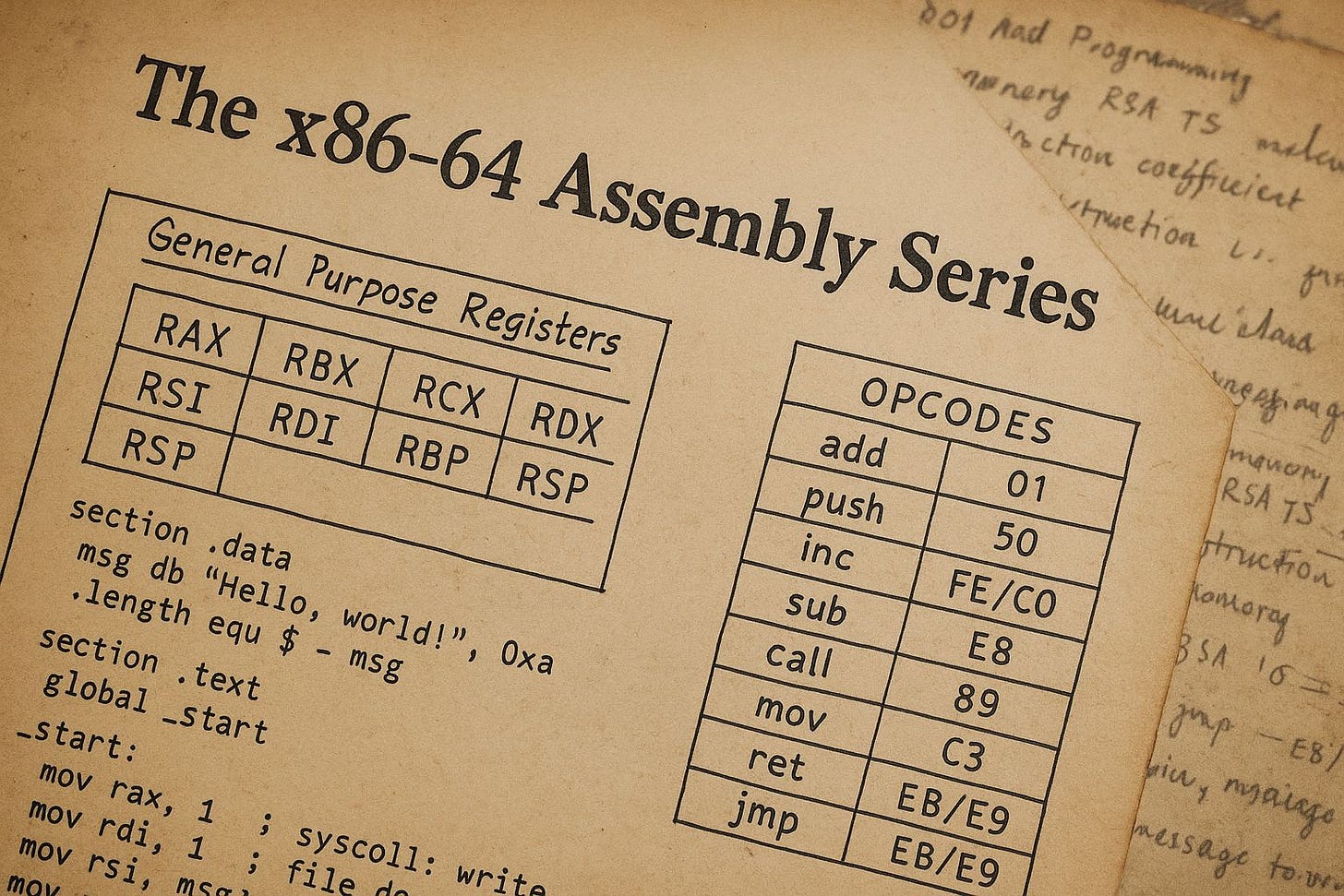A Programmer’s Guide to x86-64 Assembly (Series Overview)
Welcome to my ongoing series on x86-64 assembly programming, designed for programmers who want to peel back the abstraction and understand how code really runs at the machine level.
Why should a software engineer care about assembly? Because understanding what's happening at the lowest level helps you write better code at every level. It sharpens your intuition about performance bottlenecks, compiler behavior, memory usage, and even security. Whether you're debugging a weird bug, chasing a perf regression, or just curious how high-level constructs boil down to machine instructions, assembly is the Rosetta Stone.
We start from first principles, covering bits, memory, and CPU instructions, and gradually build up the skills to read and write real-world assembly programs. Whether you're interested in systems programming, performance tuning, or just curious about what your compiler is really doing under the hood, this series is for you.
Published Posts
Understanding Computer Organization from First Principles
Bits, memory, and the logic behind modern computing. A gentle dive into the foundations.Binary Arithmetic and Bitwise Operations for Systems Programming
Signed numbers, two's complement, masking tricks, and bit-level manipulations that matter.The System-Level Foundation of Assembly
How your code goes frommain()to a running process, and where assembly fits in.Building (and Breaking) Your First X86 Assembly Program
A minimal working program from scratch, with no runtime or C library. Learn by breaking it apart.Debugging X86-64 Assembly with GDB
Hands-on debugging walkthroughs to inspecting registers, memory, and control flow.Making System Calls in x86-64 Assembly
How to interact with the operating system directly using syscalls without a C runtime.Understanding Registers and Data Movement in x86-64 Assembly
Systematic coverage of the general-purpose registers in x86-64 architecture and how to move data between them.
x86 Addressing Modes, Part 1 — Immediate and Direct Access
Learn about static data allocation, and accessing memory using immediate and direct access modes. Setting up the foundation for the more advanced addressing modes in the upcoming articles. You will master these two addressing modes by implementing interesting exercises. For immediate addressing mode, you write your own implementation of the cat utility in x86 assembly and for direct memory addressing, you write a benchmarking program.
Upcoming Topics
Here’s a peek at what’s planned for future posts (subject to change based on feedback and curiosity):
Registers, stack, and calling conventions
Memory addressing and pointer arithmetic
Writing loops and conditionals in pure assembly
Implementing functions and recursion
A deeper dive into Linux syscalls (file I/O, process management, etc.)
Mini-project: writing a simple command-line utility
Capstone: building a minimal web server in assembly
You can subscribe to get new posts as they drop. I’m writing this series with care, making sure each part builds up your intuition as well as your skillset. Feel free to share, comment, or ask questions.




Kudos to you!